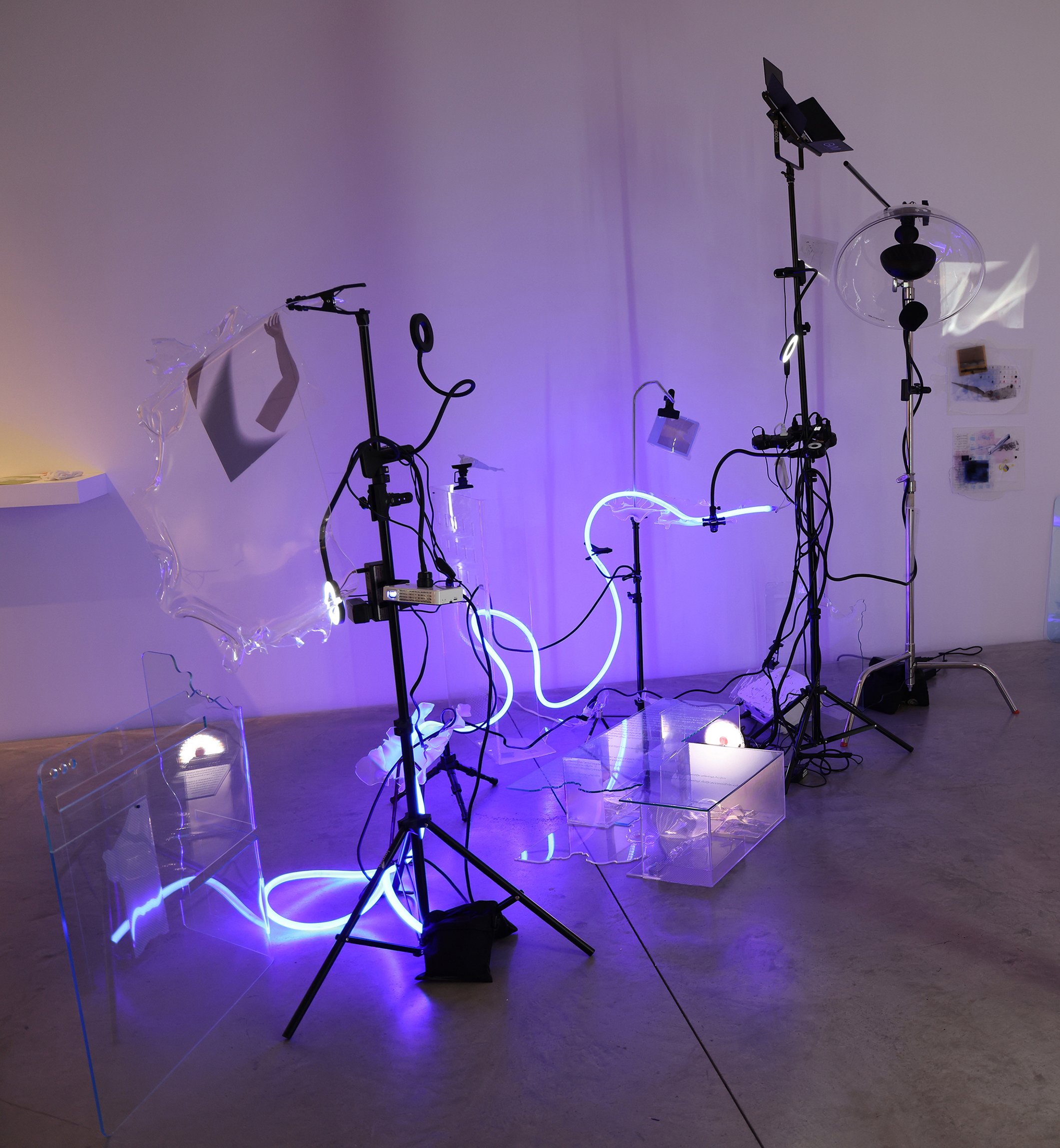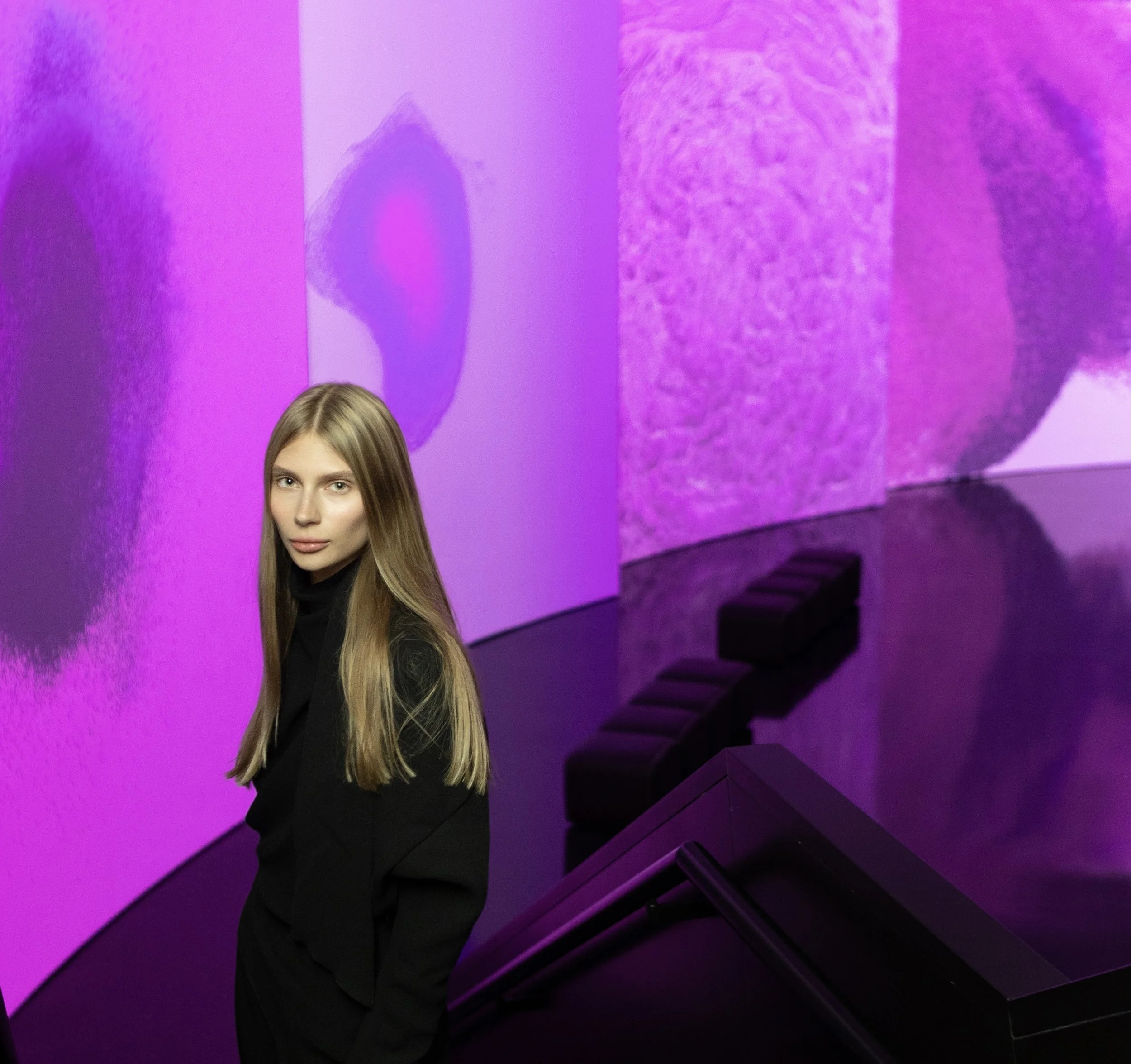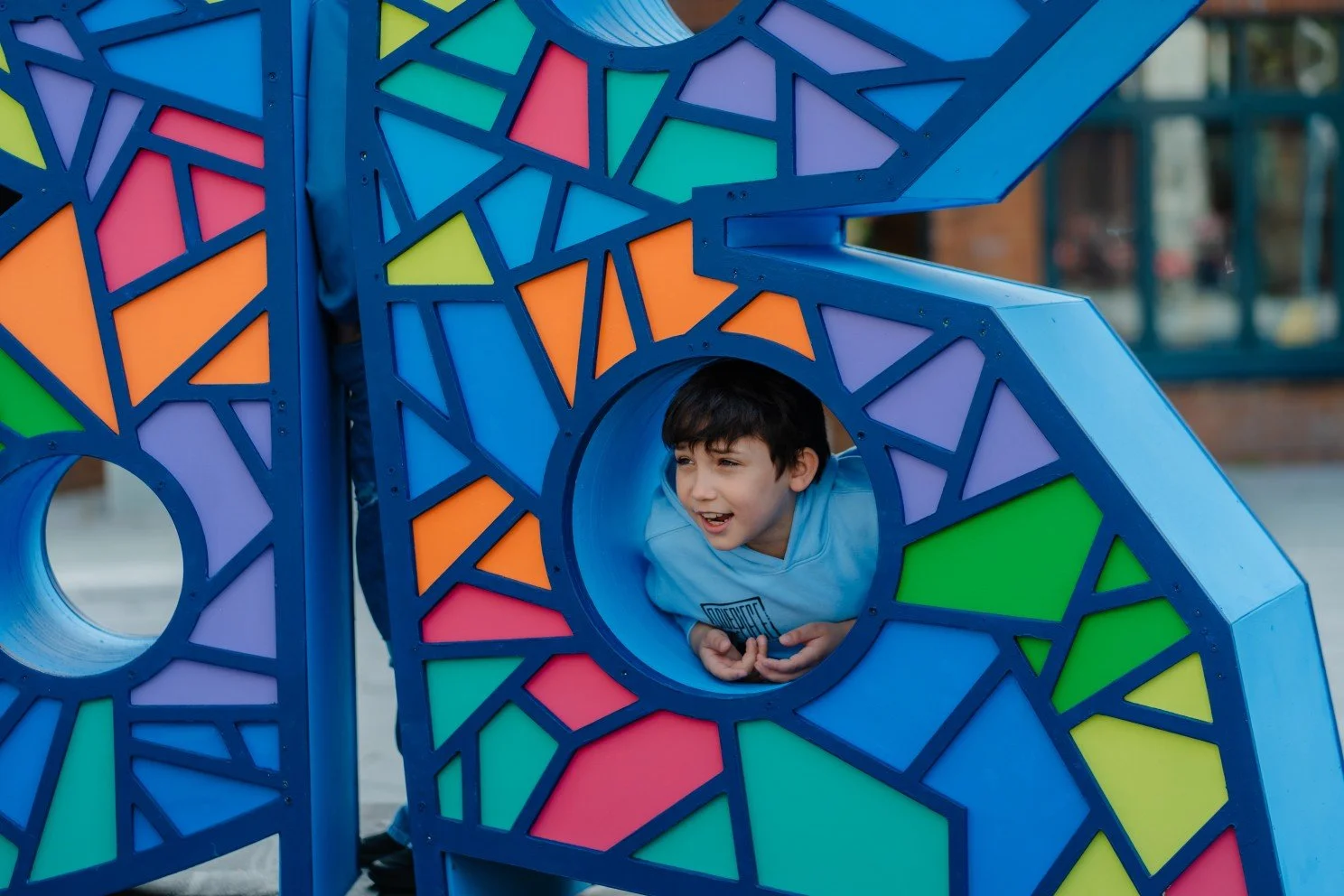10 Questions with Tianyi Sun
Al-Tiba9 Art Magazine ISSUE13 | Featured Artist
Tianyi Sun (B.1996) is a multidisciplinary artist and researcher based between New York and Beijing. She uses a diverse range of strategies, including installation, film, sculpture, painting, and physical computation. Tianyi received her MFA in Fine Arts at Parsons, The New School, New York. Tianyi’s work has been exhibited at the Los Angeles Municipal Art Gallery (LA), Sheila C. Johnson Design Center (NYC), and Helena Anrather Gallery (NYC), among others. Most recently, she participated in the Segue Reading Series with a two-person exhibition at Artist’s Space (NYC).
Tianyi Sun - Portrait
ARTIST STATEMENT
Tianyi Sun’s research and practice explore the structural functioning of digital interfaces, communication systems, imaging technologies, and physical architecture as concurrent networks of power. Through interactive installations of painting, sculpture, sound, and video incorporated with expanded uses of computation and human datasets, she interrogates the cognitive and bodily effects of technology. What are the boundaries between data, narrative, document, and experience within our programmed systems and networked ecologies? How does the body perform, leak, and deteriorate while oscillating between public and private, reality and simulation, precariousness and preservation? Through utilizing the politics and aesthetics of transparency, she questions the metaphor of memory equals storage and both our complicity with and resistance of biometric capture.
Disposable Utensils, Interactive installation, dimensions variable, 2022 © Tianyi Sun
Disposable Utensils | Project Statement
Disposable Utensils is an interactive installation that incorporates focused and ambient sound, multi-channel projection mapping, motion sensors, along with sculptural assemblages. Instruments and objects of imaging and communication technologies form a scaffolding within the installation. Motion sensors are dotted throughout, when triggered, alternate fragments of a recorded text performed in the artist's voice will play through the various sound sources from juxtaposing physical directions. The short texts are intentionally ambiguous, moving between poetic, conversational, or directive, interrogating the cognitive and bodily affects of technology and the relationship between ephemeral networked spaces and the persistence for evidence and communication.
Disposable Utensils (detail), Interactive installation, dimensions variable, 2022 © Tianyi Sun
Get your limited edition copy now
INTERVIEW
First of all, introduce yourself to our readers. Who is Tianyi Sun, and how would you describe yourself in three words?
Curious, emotional, and indecisive, I am a Chinese artist living in New York City. I grew up in the UK and was previously living in Los Angeles.
What inspired you to pursue a career in the art world? And how did you develop into the artist you are today?
For me, art was something that seemed to have always been by my side since a very young age, but I was never able to identify or articulate these processes as "art" until later in life. I remember being intuitively drawn towards making and creating things for as long as I can remember, whether that was drawing on napkins or playing with fabric scraps from my great-grandmother's sewing basket. My parents were very supportive of these interests, and being in the studio with my father, who is also an artist and one of my greatest inspirations, is one of my earliest and fondest memories. So there wasn't a defining moment when I decided to pursue a career in art; I was very fortunate to always be in close proximity to it, though without persistent but necessary challenges.
Disposable Utensils (detail), Interactive installation, dimensions variable, 2022 © Tianyi Sun
As you mention in your biography, you are a multidisciplinary artist; you work with installations, film, sculpture, painting, and physical computation. What are the common traits that link these different mediums in your practice? Or how does your work change based on the medium?
Exploring how ideas and thought processes are translated and transformed across various mediums makes up a large part of my practice; therefore, experimentation with new mediums is part of the work itself. The common thread for me is that they are all methods of expression and articulation, each with its own set of structures, constraints, and temporalities you must navigate within. I feel as if the work I am making within each medium is a restaging of the prior. Yet, the change in context and temporality reanimates my ideas in generative ways as if speaking in an alternative language. I am interested in how diverse mediums can engage the various human senses in contrasting, contradicting, or harmonious ways.
Do you have themes or concepts that you develop over the different mediums you work with? Or do you tackle different themes with different mediums?
The affects and metaphors of networked culture and contemporary archival systems are the main themes I explore in my work, regardless of the medium. Expanding on my thought from the previous question, I regard mediums as a method, process, and tool to explore and articulate ideas rather than distinct topics of focus. Having said that, different mediums or combinations of mediums allow me to illuminate unique facets of the ideas I am exploring.
In your work, you analyze the relationship between digital interfaces, communication systems, and power networks. What message would you like the viewers to read in your works?
There isn't a singular conclusive message that I wish for the audience to interpret. I am more interested in the slower, cumulative effects of my work. Instead of leaving the audience with a specific message or changing their thoughts towards dominant systems, networks, and interfaces, I hope to invoke a moment of incoherence and stumbling. As it is through stumbling, one does reorient and reconsider their position towards the thing at hand.
Disposable Utensils (detail), Interactive installation, dimensions variable, 2022 © Tianyi Sun
Disposable Utensils (detail), Interactive installation, dimensions variable, 2022 © Tianyi Sun
Your work is a poignant analysis of the societies we live in and the increasing control digital technologies have over our perception of reality. Can art have an active role in addressing such themes?
I think so, as art is the one space where things can move against the static, hegemonic ideals of cohesion and linearity as often revered by popular digital technologies. Art is more a co-creation with the audience and context in which it resides, a space for questioning and exploration without necessarily a clear hypothesis in mind.
Let's talk about your installations. How did you start experimenting with this medium? And how do you create such complicated environments?
I have always worked between mediums but often felt strong urges to think about how I could restage the various works to be experienced in unison or in more considered settings, which led to my natural dive into installation art. I realized that despite my interest in creating singular "objects, "I am more drawn to composing environments and settings where the objects can be animated and experienced in expanded ways.
Transparency is another key element in your work. What does it represent for you, and how do you incorporate this into your work?
I am very interested in the aesthetics, metaphors, and politics of transparency, especially what transparency means and stands for today under mass surveillance capitalism. By utilizing transparent materials and substrates such as glass, cast acrylic, and mylar, I also explore the connotations of preservation, display, and "freshness" we associate with transparent containers.
SoftBox, Installation view, Dimensions variable, 2022 © Tianyi Sun
Softbox, Acetate, epoxy, digital print transfers, heat treated Plexiglass®, laser cut mirrored acrylic, neodymium magnets, acrylic polymer, oil on laser cut Plexiglass®, 14x17 inches, 2022 © Tianyi Sun
Let's talk about the future. Do you have any new projects or series you are currently developing?
I have recently just wrapped up the project FROM_LISTENERS, an interactive installation and performance that took place at Artists Space in New York as part of the Segue Reading Series. It was a long-term project I have been working on for over a year with my collaborator Fiel, so I am currently still in a state of digesting this show.
And lastly, where do you see yourself and your art five years from now?
I think maintaining a consistent and enriching studio practice is the most important thing for me. Therefore, in five years, I hope I will have created a more robust and sustainable working system for myself. Being in dialogue and having an environment to share with other artists and creatives I respect is also very important to me. In five years, I would love to create more alternative community or pedagogical environments with other artists to work together.



























